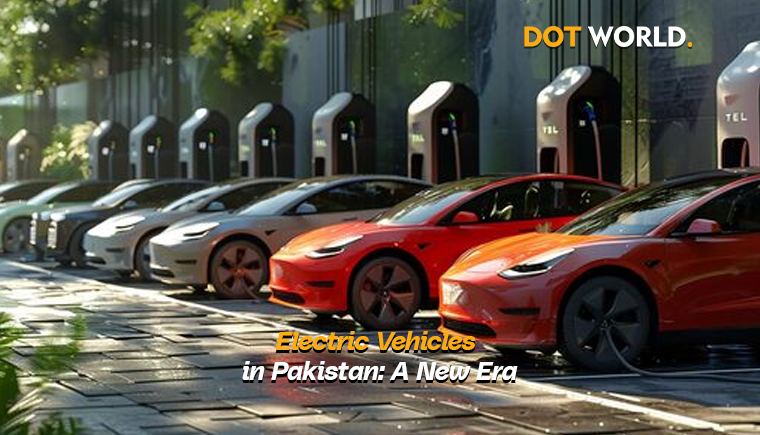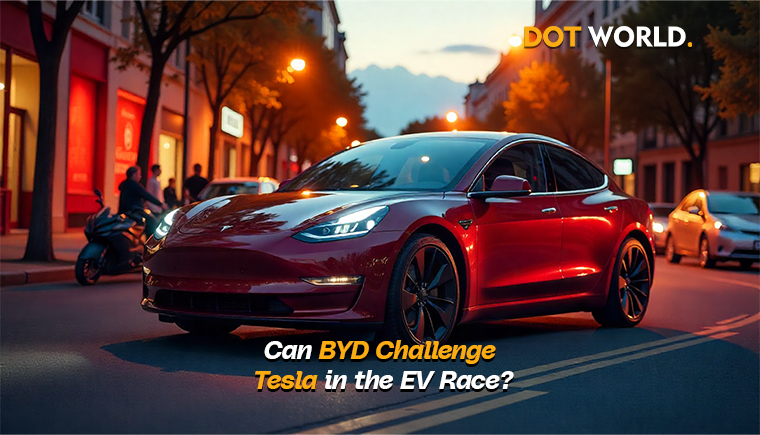The world is charging into an electric future—and Pakistan is finally plugging in. As global automotive giants pivot toward electric vehicles (EVs), and countries roll out aggressive sustainability policies, Pakistan too has begun its transition. With the introduction of the Pakistan EV policy, a wave of hope and curiosity has emerged among consumers, environmentalists, and industry stakeholders.
But is the country truly ready for this shift? Can electric cars become the norm in a country grappling with load-shedding, poor infrastructure, and economic constraints? This blog explores the journey of EVs in Pakistan—where we stand today, what the future holds, and whether this is truly the beginning of a green transportation revolution.
⚡ What Are EVs and Why Should Pakistan Care?
Electric vehicles (EVs) are powered entirely or partially by electricity instead of gasoline or diesel. They reduce carbon emissions, lower fuel costs, and promise quieter, more efficient travel. In a world dealing with climate change, energy crises, and urban pollution, EVs are more than a trend—they’re a necessity.
For Pakistan, where cities like Lahore, Karachi, and Faisalabad frequently rank among the most polluted in the world, green transportation isn’t just futuristic—it’s urgent.
📜 A Look at the Pakistan EV Policy
In 2020, the government introduced the Pakistan EV policy with ambitious goals:
- Electrify 30% of all vehicles by 2030
- Lower import duties on EV components
- Promote local manufacturing of electric cars, two-wheelers, and buses
- Offer tax relief to encourage adoption
The policy aimed to cut oil imports, reduce pollution, and generate jobs. It was hailed as a game-changer. But nearly five years in, what’s the reality on ground?
🚘 The Rise of Electric Cars in Pakistan
A number of electric cars have entered the Pakistani market in recent years:
- MG ZS EV
- BMW iX3
- Audi e-Tron
- Tesla (imported units only)
- JAC iEV7S
- Nissan Leaf
While these models are luxurious and eco-friendly, their price tags keep them out of reach for most Pakistanis. A Tesla, for example, can cost well over PKR 15 million after duties. Still, there’s growing excitement around Tesla and other EV brands—especially among youth and green tech enthusiasts.
To get a deeper look at how EVs are changing the global landscape and what that means for Pakistan, watch our breakdown:
🎥 Electric Vehicles – A New Era in Pakistan
🔋 Infrastructure: The Real Challenge
You can’t drive electric cars without charging stations—and that’s where Pakistan faces a major roadblock.
Currently, EV charging infrastructure is mostly limited to:
- Select areas in Islamabad and Lahore
- Private facilities within housing societies
- Some dealership networks like MG or Audi
Without widespread charging points, range anxiety remains a huge issue for EV owners. Add to that load-shedding, and suddenly green transportation doesn’t feel so green.
💰 Affordability: The Elephant in the Room
Let’s face it: the average Pakistani can’t afford an Audi or Tesla. The upfront cost of electric cars is still too high—even if they save money in the long run through low fuel and maintenance costs.
There’s a need for:
- Affordable EVs under PKR 3 million
- Government-backed leasing and financing options
- Incentives for local manufacturers
If the Pakistan EV policy is to succeed, accessibility must be prioritized.
🏍️ The Two-Wheeler Revolution
Here’s the good news: EVs aren’t limited to four wheels.
Electric bikes and rickshaws are quietly taking over the streets. Brands like Jolta, Metro, and Road Prince have introduced battery-powered bikes that are cheaper to run and maintain. These are gaining popularity among delivery riders and working-class individuals.
This is perhaps where Pakistan’s EV transition will see its biggest wins—on two and three wheels.
🌱 Green Transportation and Climate Goals
With Pakistan being one of the top 10 most climate-vulnerable countries, green transportation is not a luxury—it’s a lifeline.
Transitioning to EVs could help:
- Reduce urban pollution
- Lower healthcare costs from respiratory diseases
- Cut fuel imports (saving billions in foreign reserves)
- Create green jobs across sectors
If scaled well, electric cars and bikes could drastically improve quality of life in urban centers.
🌐 What About Tesla in Pakistan?
Ah, Tesla—the global symbol of the electric revolution. While the brand doesn’t officially operate in Pakistan, several units have been privately imported. Tesla’s sleek design, autonomous features, and environmental appeal make it a dream for many.
However, without:
- Official dealerships
- Service centers
- Supercharging stations
Tesla remains out of reach for the masses. Still, its popularity has helped shift public perception—making EVs cool and aspirational.
👀 Public Perception and Awareness
Most people still don’t fully understand electric vehicles. Common misconceptions include:
- “They can’t drive far.”
- “They’ll catch fire in summer.”
- “Charging them is too slow.”
- “Only rich people can buy them.”
Educational content—like our explainer videos at MyDotWorld—can help fight these myths and build public support for green transportation.
🧱 Barriers to Widespread EV Adoption
Despite policy and innovation, several obstacles remain:
- Lack of charging infrastructure
- Expensive imports and duties
- Public skepticism
- Power outages and weak grid
- No official EV resale market
Unless these are addressed, the road ahead for electric cars will remain steep.
🛠️ What Needs to Happen Now?
If Pakistan EV policy is to succeed, here’s what must happen:
✅ Subsidize EVs for middle-class buyers
✅ Invest in public charging networks
✅ Strengthen the national grid
✅ Offer tax breaks for EV startups
✅ Train local mechanics in EV repairs
✅ Push awareness campaigns in Urdu and regional languages
These steps will create the ecosystem needed for sustainable, scalable green transportation.
🔮 The Future: Will Pakistan Go Fully Electric?
The global future is clear: by 2035, countries like Norway and Germany plan to ban petrol car sales. China is pushing EVs at a massive scale. India is rapidly electrifying its two-wheeler market.
If Pakistan can:
- Implement its EV policy effectively
- Focus on affordability
- Build infrastructure
…then a future filled with EVs, clean air, and tech-driven mobility is possible.
🧩 Conclusion: A Spark of Hope
While the road to electric mobility is long, Pakistan has taken the first few steps. The introduction of the Pakistan EV policy, the rise of two-wheeler EVs, and the arrival of brands like Tesla (even unofficially) signal a shift.
But for this to become a full-blown green transportation revolution, policies must be matched by action, infrastructure, and awareness.
Let’s hope that the spark created by today’s EVs grows into a cleaner, smarter, and more sustainable tomorrow.





